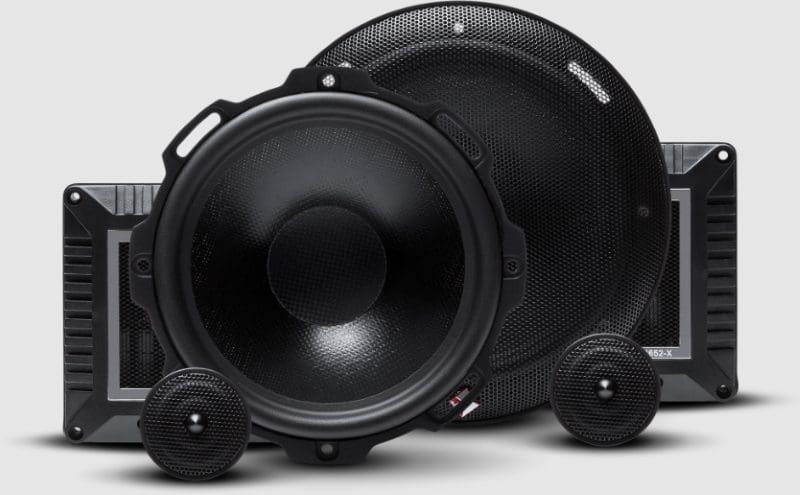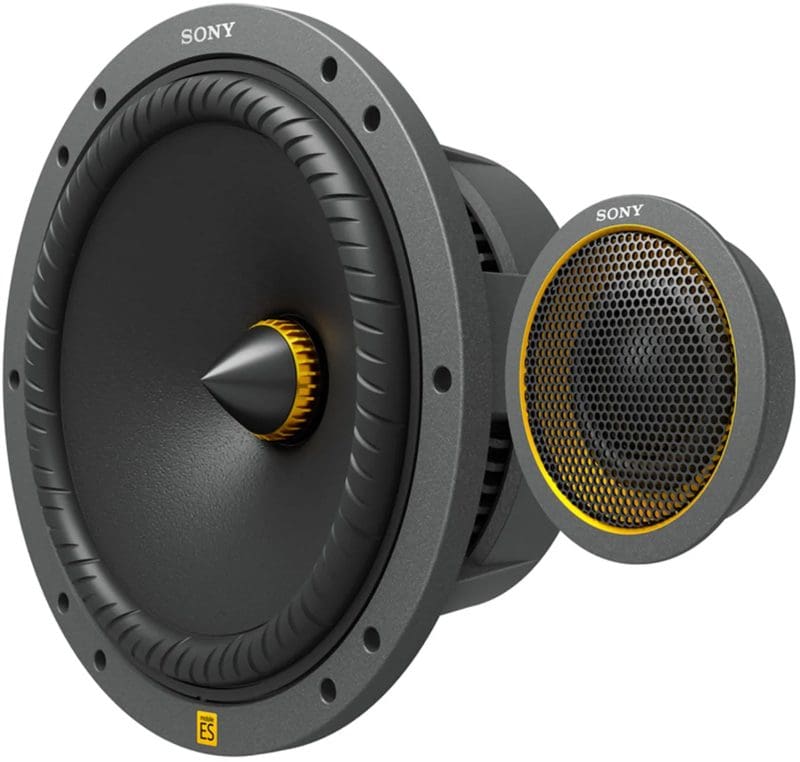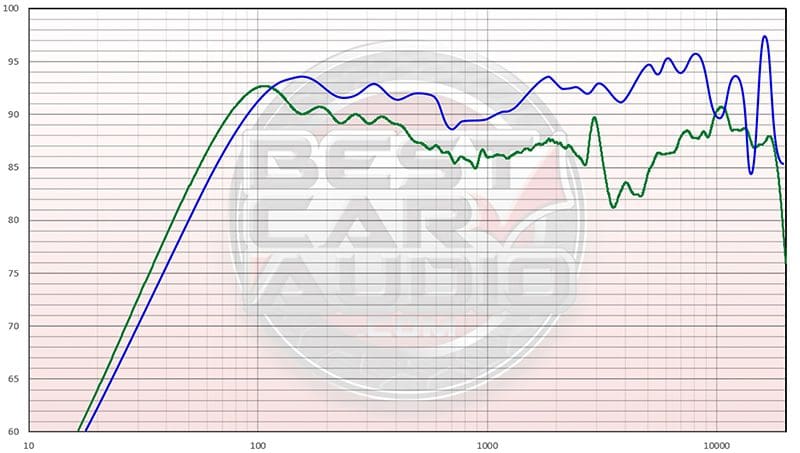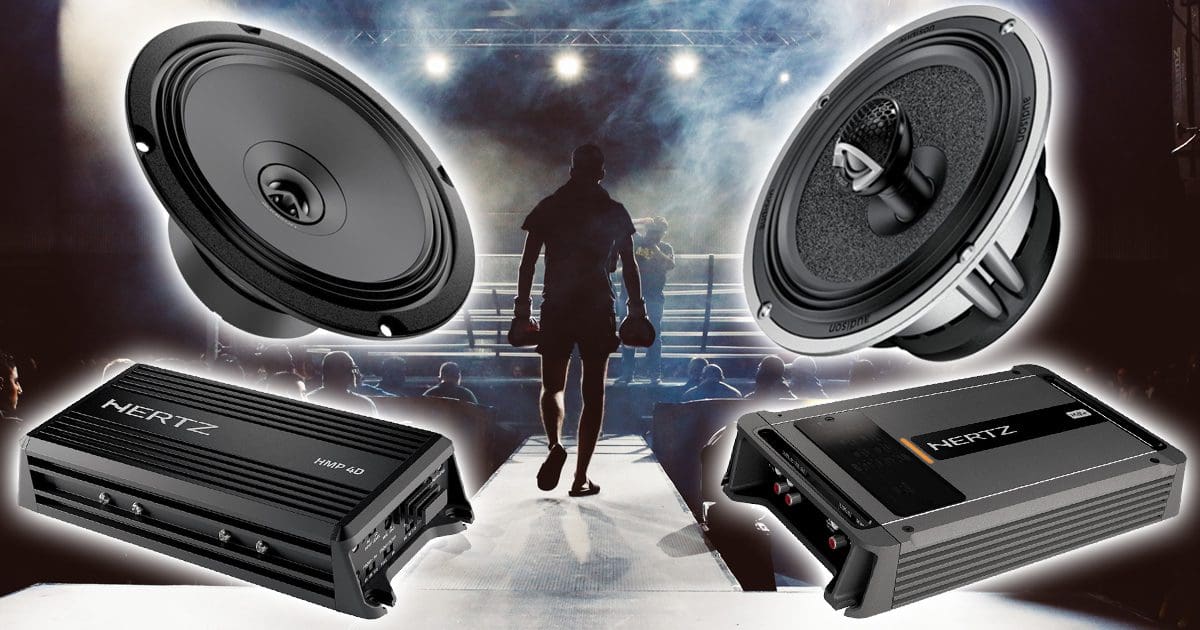There’s no getting around the fact that choosing the right speakers to upgrade your car audio system is a challenge. First, you need to visit a reputable mobile enhancement retailer. Then it would help if you auditioned speakers that are right for your vehicle under controlled conditions. Many enthusiasts don’t realize that the “best” speaker option depends a lot on the power your system has available. If you’re powering the speakers with a 20- to 22-watt radio, you’ll want a very efficient speaker so the system will play loudly. If you have a 75- to 125-watt amplifier, then you need a speaker that not only sounds good but can handle being played at that level.
Speaker Power Handling and Quality
Before we dive into a discussion about speaker efficiency, we need to remind everyone that a speaker’s quality is not proportional to its power ratings. Many speakers rated for 50 watts sound excellent and even more rated for more than 100 watts that sound terrible. As such, learning how to audition the speakers you want to buy is crucial so you can pick models that deliver smooth frequency response with minimal distortion.
Speaker Efficiency and Output Capability
Let’s kick this off by talking about speaker efficiency. A speaker is a transducer. It converts the current and voltage from your amplifier into a movement that produces audio. If you like listening to your music at high volume levels, then it stands to reason that you want a speaker that converts as much of the power from your amp into sound, right? Maybe not.
Engineers need to balance three characteristics when designing a speaker: bass output, excursion capability and power handling. Let’s consider a 6.5-inch woofer, one of the most popular sizes in the industry. If the engineer wants one of these speakers to be extremely efficient, then the cone and voice coil assembly need to be as light as possible so the system can produce as much output as possible. A light speaker cone assembly with a soft suspension typically has a high resonant frequency, meaning it won’t produce much bass output.
On the other hand, if you want a speaker that can handle a lot of power and have impressive excursion capabilities, then the driver will need a relatively large voice coil and a cone that’s adequately robust to remain stable at high excursion levels. The voice coil former and winding, along with the suspension components, need to allow the cone to move forward and rearward so the driver can move a lot of air and produce a lot of output.


Reading Speaker Efficiency Graphs
Many reputable companies provide graphs showing their speakers’ frequency response at a given distance and power level. It’s crucial to ensure that the graphs you are looking at are using the same signal level reference, as there are two popular standards. In car audio applications, we typically use the 1-watt-at-1-meter reference. This means the driver is fed a signal at a voltage that equates to delivering 1 watt of power to the speaker, then measuring the output at a distance of 1 meter away from that speaker.
The other standard is to provide the speaker with 2.83 volts of input and measure the output at 1 meter from the speaker. The 2.83-volt reference is equal to 1 watt into an 8-ohm speaker but would equate to 2 watts into a 4-ohm speaker that we traditionally use in car audio applications. As such, the levels will be 3 dB higher than a 1-W/1-M measurement. Make sure you know the input and measurement distance information if you’re going to compare frequency response charts from different manufacturers.
Once you’ve established how much power the speaker is receiving, you can start to analyze the information provided by the graph. The line (or trace) represents how much sound energy the speaker produces at any given frequency. You’ll want to take two things away from this information: What is the shape of the curve, and what is the amplitude? If the response curve is very flat above the speaker’s resonant frequency, the manufacturer has likely done an excellent job of optimizing its design. If there are bumps or dips anywhere, those are resonances that will be perceived as emphasis or missing parts of the audio spectrum. A smoother response is better.
Keep in mind that most measurement software has options to smooth the measurements. If something looks too good to be true, it likely is. Lastly, and most relevant to this discussion, is the overall amplitude of the trace. This will tell you how much of the power going to the speaker is being converted into sound energy.

Let’s analyze the two response graphs shown in the chart above. The blue trace is the Audison APX 6.5 from their Prima series, and the green trace is the AC X6.5 from the Voce line. You’ll first notice that the Prima speaker is louder for the same 2.83V input signal by 2 to 6 dB across most of the midrange region. Since this driver is designed as a factory speaker upgrade, that efficiency makes sense. It’s much more likely that this speaker will be powered by a factory radio, directly from an aftermarket radio or a small to moderately sized amplifier. To put this into perspective, when provided with 10 watts of power, the Prima speaker would be as loud (or louder) than the Voce speaker when driven with 20 watts. So, why would anyone choose the Voce?
If you look at the shape of the response graph, you’ll see that the Voce driver produces significantly more bass around 100 Hz, while the Prima driver starts to decrease in bass output around 150 Hz. As a result, the Voce speaker will produce a warmer, richer sound if these drivers are used without a subwoofer. This is a perfect example of the trade-off we discussed earlier regarding low-frequency extension and driver efficiency. If you want a driver that produces more bass and midbass, then the Voce is the better choice.
This graph doesn’t show you how loudly each speaker can play. The Prima driver has an Xmax specification of 2 millimeters. The Voce driver has an Xmax specification of 3 millimeters. This means the woofer cone can move 50% farther before distortion in the output skyrockets. So, if you have the power and like to listen to your music at higher volume levels, the Voce is the better choice.
Match Your Speaker to the Amplifier Power in Your System
For many car audio enthusiasts, the above information adds an additional level of complication to the purchase process. Not only do you need to choose a speaker that sounds good, but you’ll want to pick one that works with the power you currently have available or might be adding to the system in the future. To make the purchasing process more straightforward, visit a local specialty mobile enhancement retailer and talk with them about the long-term goals for your audio system. They can help you choose speakers that will sound great and perform the way you want.

